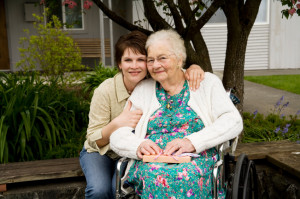The Wisconsin Department of Health and Family Services, Division of Disability and Elder Services, has embarked on an initiative to expand managed long-term care options for elders and people with disabilities in Wisconsin. Long-term care consists of services and supports that people need to meet their daily needs.
 What is the Managed Long-Term Care Expansion Initiative?
What is the Managed Long-Term Care Expansion Initiative?
The Wisconsin Department of Health and Family Services, Division of Disability and Elder Services, has embarked on an initiative to expand managed long-term care options for elders and people with disabilities in Wisconsin. Long-term care consists of services and supports that people need to meet their daily needs. These services and supports include: assistance with activities such as eating, bathing, or using the telephone; nurse visits at home; home delivered meals; home modifications; nursing home care; and case management. Many Wisconsinites take advantage of these supports and services, but over 11,000 others are waiting to receive them.
In his February 2006 State of the State Address, Wisconsin Governor Jim Doyle announced his goal to expand the Family Care program statewide over the next five years. Family Care has proven to successfully meet the needs of long-term care consumers in five pilot counties. As a first step toward achieving this goal, DHFS has awarded grants to ten groups to carry out intensive planning activities. These planning groups include county governments and private agencies working in partnership.
Counties involved in the ten planning grants are illustrated in Figure 1. More information about these
planning groups is posted on the website provided below.
Through this initiative planning groups will develop strategies to improve:
• Access – by assuring people get the services they need, when they need them;
• Choice – by giving people meaningful choices about where they receive their care and how they live their lives;
• Quality – by making sure long-term care services work to support a good quality of life for each
consumer; and
• Cost-effectiveness – by building a cost-effective long-term care system that is sustainable into the future.
